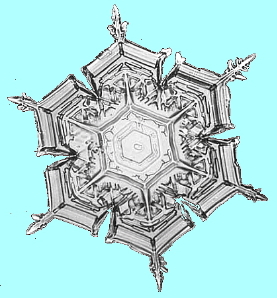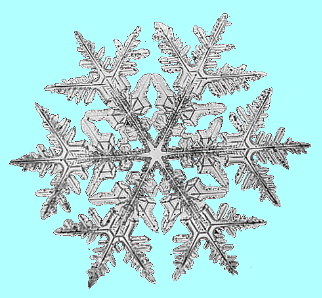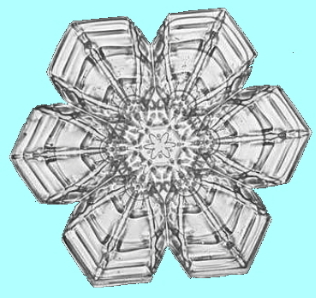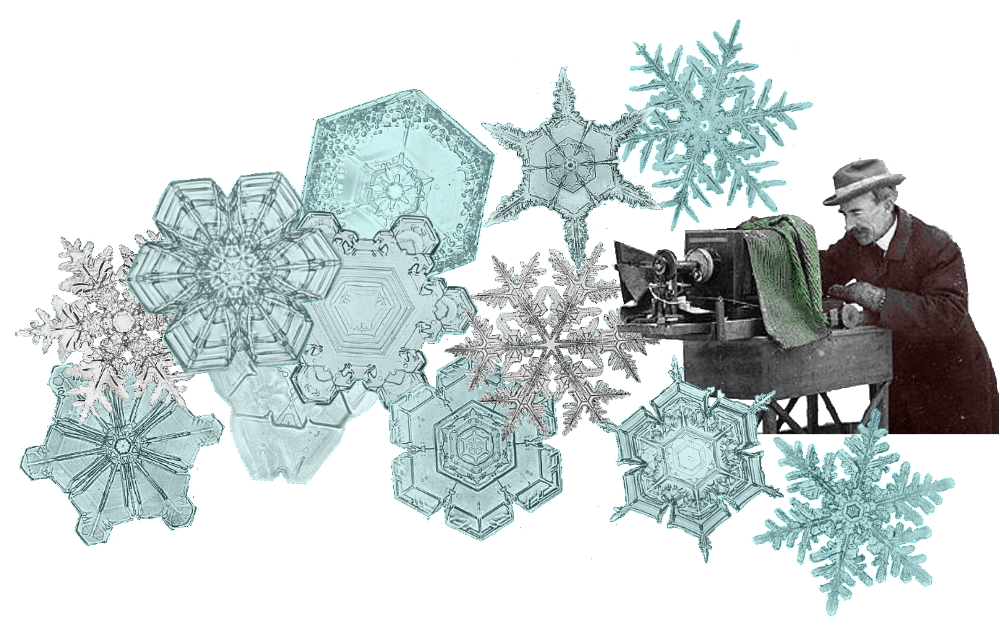
S’no Wonder
On February 9, 1865, American photographer and pioneering weather scientist Wilson Alwyn Bentley was born.
After experiencing the Vermont winter snows for almost two decades, Bentley followed his passion for capturing the beauty of snowflakes for others to share. He managed to figure out a way to make useable photographs of snow crystals, generally called “snowflakes”. Bentley called these images photomicrographs. His interests and realization of his dream were supported by his mother, a former teacher who home-schooled him and introduced him to books, drawing, the microscope, and the camera.

He managed his photomicrographing with a bellows camera, a very small stop or small lens opening, a long exposure time dependent on available light, and infinite patience.
His passion to capture beauty; his weather observations to know; his tenacity and skill to modify the equipment to make the photograph, and in what conditions, all fuse into an unusual man for most ages who continued his special vision regardless of what surely drew laughter and ridicule by those around him. Financed neither by university department, government grant, nor science foundation, Bentley succeeded in making an inestimable contribution to atmospheric science.

Not only did he take photographs, he produced slides for exhibition.
He described each snow crystal and scrupulously recorded the meteorologic data that gave it existence.
He spoke and exhibited his work. Then, as now, Bentley’s photographs would have appealed to a wide range of the Public, scientists, and mathematicians.
What did each see? Fantasy forms of lace tracery? Photographs of atmospheric phenomena? Fractal figures? All are present in each photograph. Snowflakes had captivated Kepler with their six-cornered form on a single plane. As they did Sir William Bragg, Nobel Laureate for his work with x-rays and crystal structure. As they continue to coax diagrams from modern crystallographers to explain complex hydrogen bonds and molecular lattices.

And when winter was over? Bentley created his own experimental method for determining raindrop size and size variations within specific kinds of rain events producing data well before cloud physics was a recognized study.

The man who argued that no two snowflakes were alike, Bentley wrote popular and technical papers. He co-authored Snow Crystals with W. J. Humphreys, a US Weather Bureau meteorologist that features over 2,000 of Bentley’s photomicrographs and is still in print.
For all his contribution to the sciences, photography, and popular respect for a natural wonder, he remains a singular man who realized that however many examples of snow crystals he could capture, untold millions of others disappeared, their designs and beauty with them.
B Bondar / Real World Content Advantage